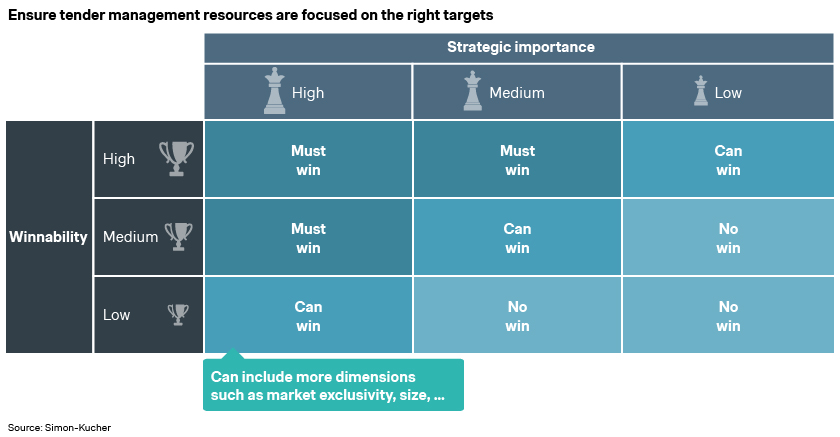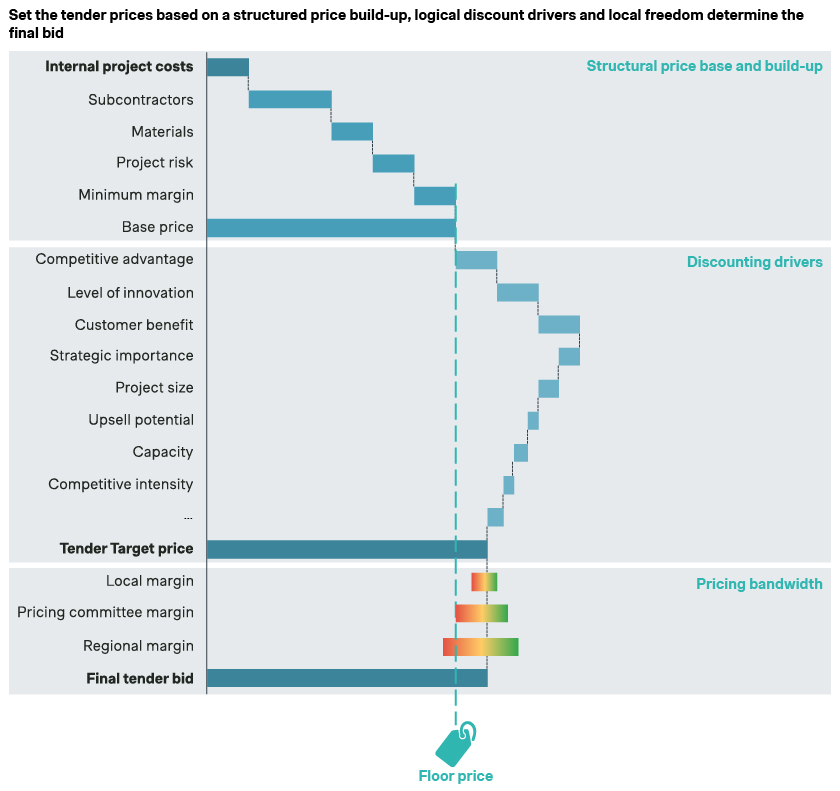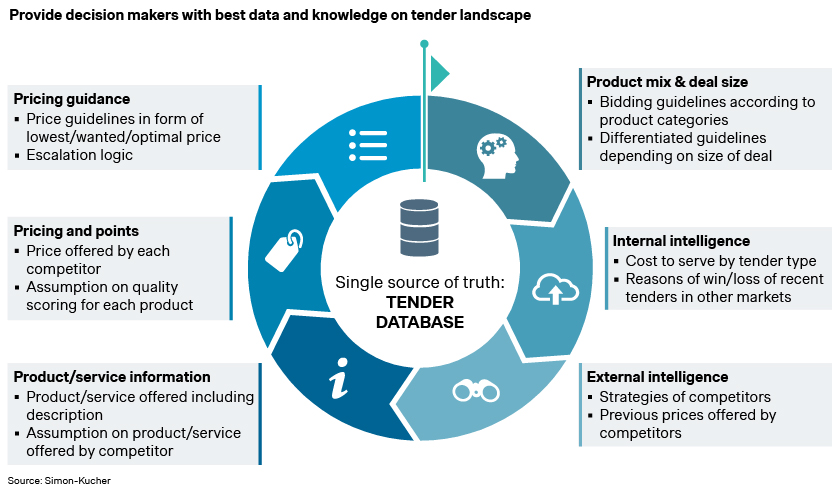The Dutch construction industry faces uncertainty in 2024 due to global economic instability and high interest rates. Contractors face several key challenges that hinder them in their ability to predict and steer for revenue and costs, and thus profitability. Therefore, it is vital to prioritize tender excellence to achieve business growth within the current market dynamics.
The high interest rates and global instability hurt the investment climate and lead to a projected shrinkage in the market for 2024, even with the current housing shortage at hand. But at the same time, prices are volatile and hard to predict. Building material prices are decreasing, but (sub)contractors are increasing prices and interest rates remain high.
With decreasing demand and volatile costs, contractors need to make sure they win the projects that matter and manage for profitability at the same time. Tender excellence is vital for contractors to succeed in both these challenges. In our experience there is ample potential to be realized with a more structural and fact-based approach to tendering: We see companies that successfully embed best practices along the full tender capability realize a 10%-20% increase in win rate, and a 1%-3% increased price level. These best practices can be broken down into three themes: Tender strategy, Tender execution, and Tender infrastructure.
Tender strategy: Understand the market and prioritize the right tenders
Understanding the market landscape is paramount. Successful companies delve deep into both internal and external assessments. They grasp market conditions and key tender archetypes, evaluate internal resources and capabilities, and stay abreast of trends, regulations, and changes affecting their business. Armed with this knowledge, they leverage their performance against competitors to highlight differentiators, crucial for winning tenders.

Secondly, prioritization is key to ensuring resources are allocated effectively. Successful companies don't scatter their efforts across all tenders but strategically focus on the most important ones. With tender resources often limited, prioritization becomes even more critical, particularly right now, with most companies lacking enough FTEs to give every tender maximum attention.
Lastly, planning tender shaping and execution activities based on prioritization outcomes is essential. This involves identifying relevant tender process steps, enabling central planning and resource allocation. Transparency regarding the importance of each tender allows stakeholders to prioritize effectively. Establishing a standardized tender calendar provides a cohesive overview and timeline for streamlined execution.
Tender execution: Turn strategic directions into action
When making the bid, it is a best practice to ‘version’ the proposed solution. Position these solutions around the requirements and differentiate price across different price points. For example, a solution meeting all specified requirements can be accompanied by an additional, smaller (or slower, or riskier) solution at a lower price point, as well as by sped up timeline at a higher cost.

Secondly, setting tender prices based on a structured price build-up, logical discount drivers, and local freedom helps determine the final bid. Clearly define a pricing structure to build towards the optimal bid price, including all cost factors such as materials, subcontractors, and risk, but also including the quantified result of customer and deal specific drivers such as competitive advantage, strategic importance, and available capacity. The best in class have clear guidelines for setting a final bid price within predetermined bandwidths, allowing more freedom in exceptional cases only. This approach mitigates uncertainty in bidding and avoids the pitfalls of "game guessing," providing a clear view of likely tender outcomes prior to bid decision and award.
Regardless of the tender outcome, it's crucial to strategically evaluate each result and assign actions. Establishing a task force to evaluate each tender ensures adaptation from learnings. Tactical deployment aims to optimize contracts, irrespective of tender outcomes, ensuring continuous improvement in the company's tender process.
Tender infrastructure: Lay the foundations for effective & efficient tender performance
Crafting a tailored tender governance model that aligns with both local and HQ needs and resources is paramount. This involves leveraging local expertise to swiftly adapt to external requirements, while ensuring transparent ownership and effective criteria for local/central interfaces. Establishing a clear decision-making pathway and escalation ladder institutionalizes price decision-making into the organizational structure, with defined escalation policies facilitating swift resolutions through regular meetings between relevant parties.

Streamlining tender processes by mapping them clearly enables efficient interdependencies. Central to this is the implementation of a unified tender database, serving as the backbone for solid intelligence management and fostering a one-source-of-truth approach. Equipping decision-makers with the best available data and insights on the tender landscape is crucial for informed decision-making.
Embracing a spectrum of tools, including innovative Generative AI solutions, can revolutionize tender management. For instance, using Generative AI can expedite the extraction of key technical and commercial information from lengthy Requests for Quotations saving time and enhancing customer interaction quality. An example of this is GenAI-supported RfQ processes, which have demonstrably increased efficiency and effectiveness. A recent Simon-Kucher project on this topic resulted in 30% time saved, while increasing the win rate by 5%.
Contractors need to ensure their tender capability is ready for the current market
In conclusion, tendering is a key capability, and ensuring no volume or margin is leaking through shortcomings on this topic is more crucial than ever. Contractors need to make sure they optimize for the full scope of the tendering process, from market research to tender execution and follow-up, supported by the right state of the art tooling and knowledge.
Are you interested in how we can support you to streamline your tendering processes? We can look with you into your organization to see what quick wins and solutions are worth investing in. Feel free to contact us to discuss how to make this a commercial success for you.








